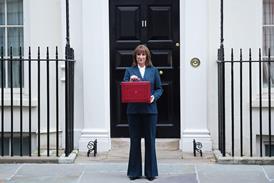In December 2015, 194 countries, including the world’s two biggest polluters – China and the US (responsible for 30% and 15% of the world’s CO2 emissions respectively) signed the Paris Agreement on Climate Change. The agreement, which aimed to limit the increase in global average temperatures to ‘well below 2°C above pre-industrial levels’, was widely hailed as a landmark international deal capable of reducing the risks and impacts of climate change. On 1 June, president Donald Trump announced that the US would withdraw from the agreement.
Article 28.1 of the agreement
According to article 28.1, such action is possible under both international and US law. Article 28.1 allows a party to withdraw by giving one year’s written notice to the UN secretary general, commencing three years after the agreement’s entry into force (4 November 2016). The soonest possible US notice of withdrawal under article 28.1 will therefore be 4 November 2019, which would result in withdrawal on 4 November 2020. This happens to be the day after the next US presidential election.
Withdrawal from the UNFCCC
If Trump has any doubts about his ability to win re-election, he may wish to consider swifter methods of withdrawal. One method would be to withdraw from its parent agreement, the United Nations Framework Convention on Climate Change (UNFCCC), article 25.1 of which allows parties to withdraw from the convention by giving one year’s notice. Article 28.3 of the agreement makes plain that ‘any party that withdraws from the convention shall be considered as also having withdrawn from this agreement’. This means that Trump could withdraw the US from the agreement in only a year.
One possible complication of this swifter course of action lies in the fact that, while the agreement was accepted by president Obama under his executive authority, the UNFCCC was ratified by president George HW Bush after receiving the consent of the US senate under Article II of the US constitution. The consequence of this is that there is at least an argument that Trump would require the consent of the senate because of the principle in US constitutional law that termination of a law requires action by the same institutional actors that adopted it. In practice, however, it is most unlikely that the legality of a decision by the president to withdraw from the UNFCCC could be successfully challenged.
The issue arose in the late 1970s when president Carter unilaterally terminated the Sino-American Mutual Defence Treaty with the Republic of China (Taiwan) when he decided to recognise the People’s Republic of China. Several senators challenged Carter’s action on the basis that it required senate approval, but the Supreme Court (in Goldwater v Carter, 444 U.S. 996 (1979)) dismissed the complaint.
Effect of US withdrawal
According to its article 21.1, entry into force of the Paris Agreement requires acceptance by 55 countries, representing 55% of total global greenhouse emissions. However, US withdrawal would not alter this because, as article 55 of the Vienna Convention on the Law of Treaties states: ‘A multilateral treaty does not terminate by reason only of the fact that the number of parties falls below the number necessary for entry into force.’
Of greater concern are the political and climate change consequences, and in particular that other governments will follow the US lead. Early indications, however, suggest that the contrary is the case.
Former president Obama was quick to criticise his successor and at the same time reassure those concerned by the implications of the announcement for global climate change by expressing confidence ‘that our states, cities, and businesses will step up and do even more to lead the way, and help protect for future generations the one planet we’ve got’.
There are reasons to suppose that this optimism was well placed. Numerous US business leaders, city mayors and states have reaffirmed their commitment to levels of emission reductions enshrined in the agreement, raising the possibility that the national effect of withdrawal could be offset by continuing efforts to combat climate change at corporate, city and state levels. Hawaii became the first state to pass a law committing itself to the terms of the agreement.
Closer to home, there are similar indications that combating the effects of climate change remains a priority. In Europe via a communique on 27 May, the governments of France, the UK, Japan, Italy, Germany and Canada, as well as the presidents of the European Council and the European Commission reaffirmed ‘their strong commitment to swiftly implement the Paris Agreement’. And a number of recent cases in the UK serve to illustrate how seriously the domestic courts are taking climate change issues, such as in relation to air quality (see R (ClientEarth) v Secretary of State for the Environment, Food and Rural Affairs [2015] UKSC 28 and ClientEarth v Secretary of State for the Environment, Food and Rural Affairs [2016] EWHC 2740 (Admin)).
In May a report published by the UN Environment Programme entitled The Status of Climate Change Litigation suggested the UK courts are not alone. Examples of climate change litigation used to be few but they have proliferated recently. The US has taken a clear lead, with 654 climate change cases filed as of March 2017, ahead of Australia in second with 80 and then the UK with 49. According to the Renewables 2017 Global Status Report published in June by the Renewable Energy Policy Network for the 21st Century, the world is now, for the first time, adding more green energy capacity each year than it adds in new capacity from all fossil fuels combined.
For those concerned about climate change, Trump’s announcement cannot be seen as good news. But whether viewed from the perspective of governments at the local or national level, the courts and the cases brought to them, or the private sector, there seems to be some truth in the UN’s observation that the ‘renewables train has already left the station’ and therefore that the Paris Agreement will survive the departure of the US.
Richard Wald is a barrister at 39 Essex Chambers.































No comments yet